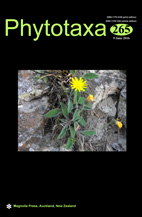Abstract
Anatomy of leaf cross sections, karyological studies, and nuclear DNA content analysis by flow cytometry were carried out on the six Sternbergia species from Turkey: S. candida (endemic to the country), S. clusiana, S. colchiciflora, S. lutea, S. sicula and S. vernalis. In karyological analysis, number and morphology of the somatic chromosomes, the ploidy level and karyotype formula of the specimens used in the study were investigated in detail. The measurements of somatic chromosomes were calculated with formula of the relative variation in chromosome lenght (CVCL) and mean centromeric asymmetry (MCA). According to the results of this study, there are two different basic chromosome numbers. i.e. x = 10 (S. candida, S. clusiana, S. colchiciflora and S. vernalis) and x = 11 (S. lutea and S. sicula). Results of karyotype analysis corroborated results of previous studies. The smallest chromosome length was measured as 3.05 μm in S. clusiana while the longest length of 20.89 μm was observed in S. sicula. This is the first study reporting nuclear DNA content results for Sternbergia. Based on results of the nuclear DNA content analysis, there is a great variation within the genus in the interspecific level as 2C DNA content varies between 54.03 and 80.42 pg among the species investigated in the study. Anatomical features of the leaves were good taxonomic markers, especially concerning their palisade cells, ribs, cuticle, laticifer canals, vascular bundles, crystals, stomatal index, and stomata structure. Analytical drawings were presented. Six noteworthy leaf characters were quantified, organized in a data matrix, and analysed with UPGMA methods. In conclusion, cytological characteristics of the Sternbergia species together with their leaf features proved to be quite useful in identification and therefore can provide more clarity for taxonomic revision of the genus.

